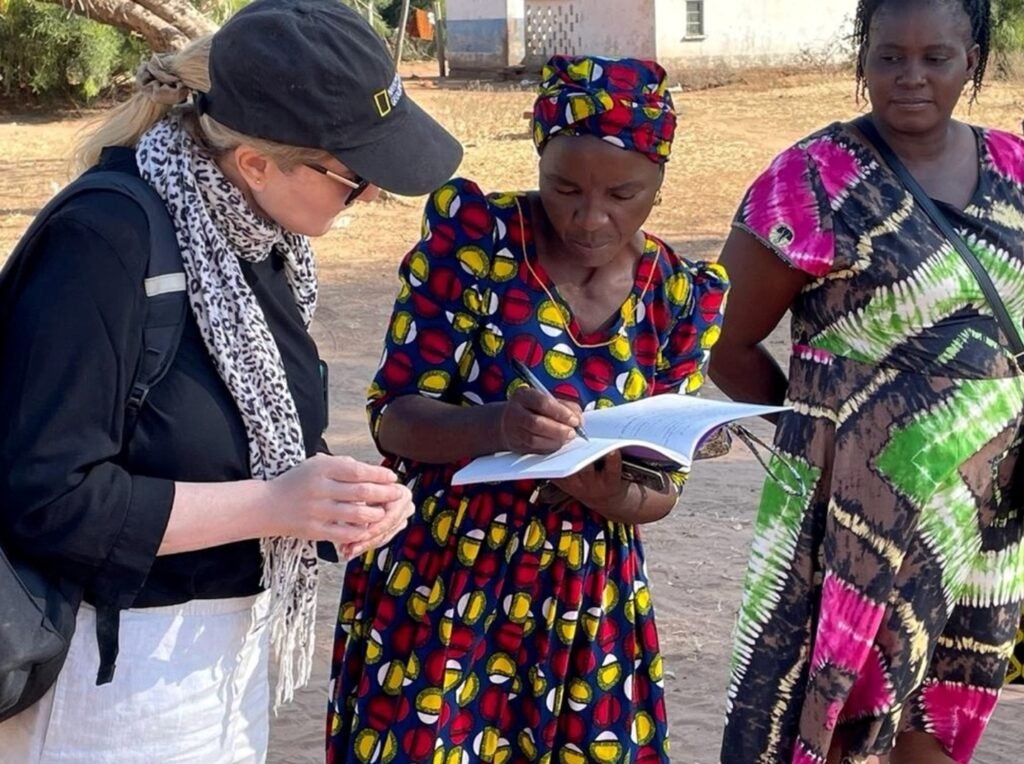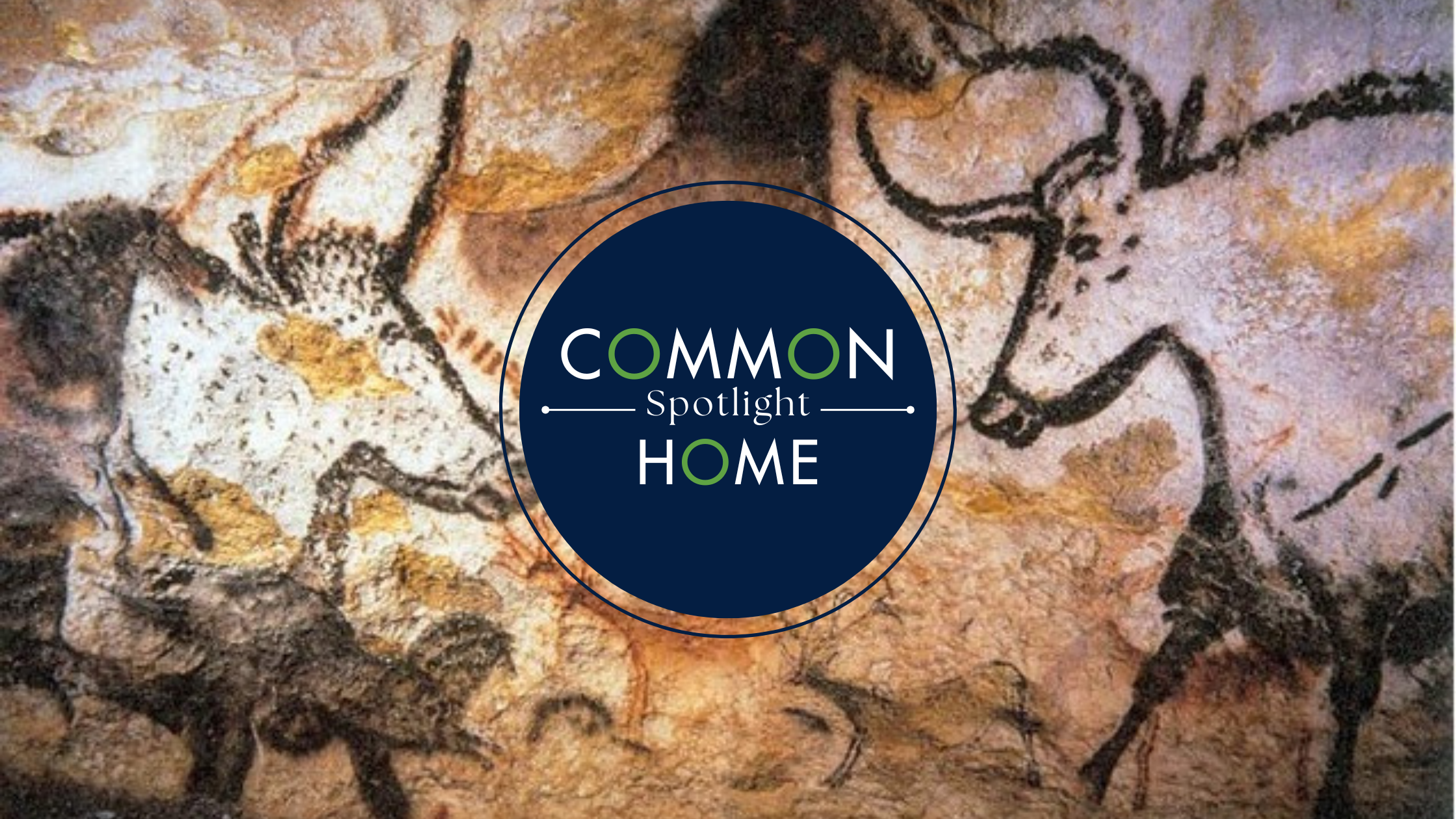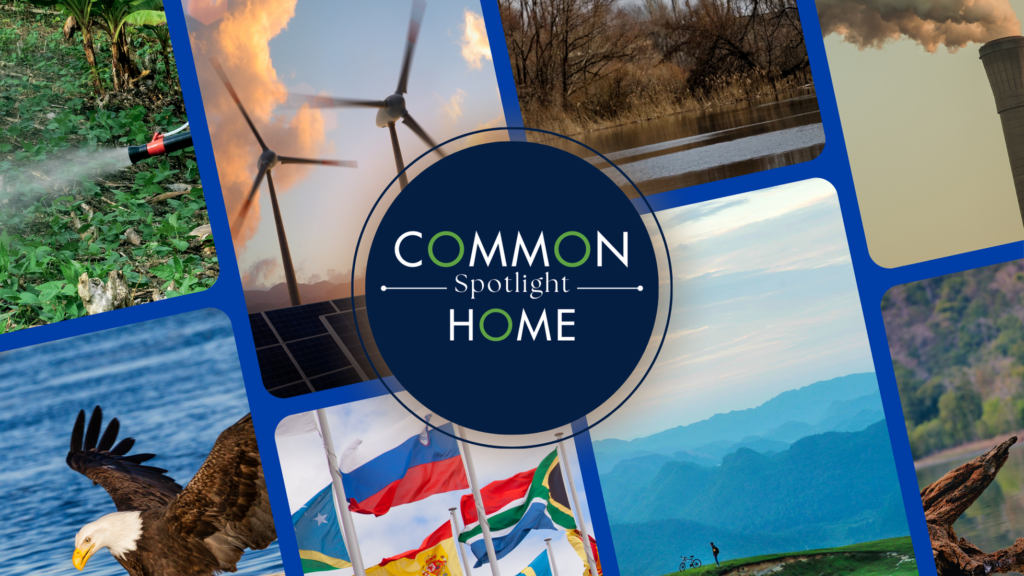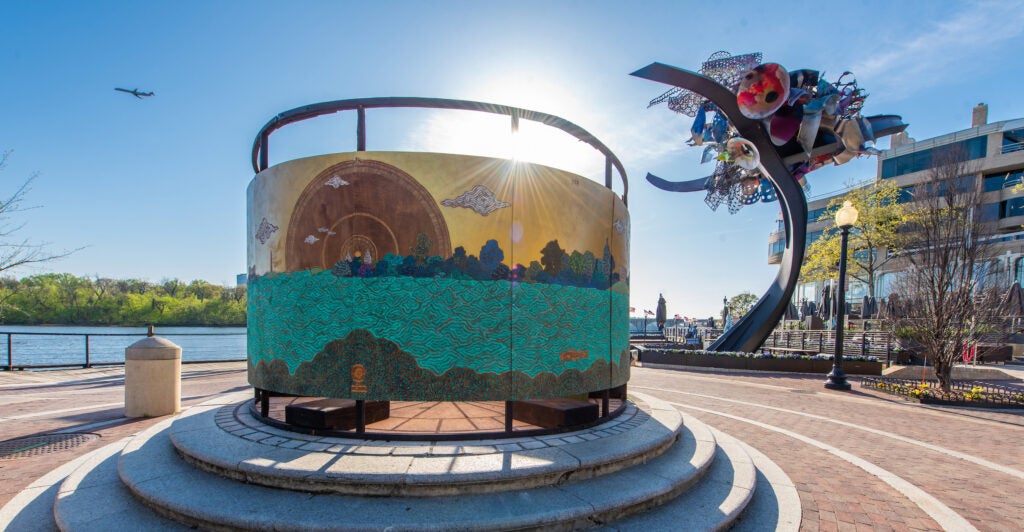Climate Adaptation Research, the Human Condition, and Environmental Storytelling for Impact
A Common Home Spotlight by ECo Faculty Network member Dr. Marisa O. Ensor
October 5, 2025
As the existential threat posed by the climate crisis escalates – driving heatwaves, deadly storms and rising seas, and deepening ecological collapse and inequality – the nexus of environmental science and storytelling is gaining ascendance for impactful, transformative action. This modern brand of environmental storytelling conveys messages that not only inform but also connect and inspire action. Stories are central to the human condition, and constitute our most instinctive and universal means of communication. Our species has always used storytelling to create a shared identity and give explanation and context to the world around us. For scientists and science communicators, environmental storytelling can help us push the boundaries of research and practice to improve scientific outcomes, co-generate impactful knowledge, and spark the attitudinal and behavioral shifts necessary for sustainable climate action and conservation efforts.
Homo Sapiens, the Storyteller
Storytelling is a human universal, representing an evolutionary advantage for the survival of humankind. Paleoanthropologists have suggested that storytelling developed simultaneously or not long after the development of language itself as a form of pedagogy used to convey messages critical to hunter-gatherer cooperative behavior. The earliest known evidence of visual storytelling comes from Blombos Cave, located about 300 km east of Cape Town, South Africa. In 2011, researchers discovered abstract drawings and engravings over 70,000 years old. Their findings, published in Nature, highlight early Homo Sapiens’ capacity for visual storytelling across different media and techniques.
The Lascaux cave paintings in France (c. 22,000-17,000 BP) and those in Altamira and other Paleolithic caves in northern Spain (c. 35,000-11,000 BP) are among the earliest known examples of storytelling through representational art, depicting hunting narratives and possible ritual activities. Featuring detailed images of animals such as aurochs (an ancestor of domestic cattle), bison, boars, deer, felines, horses, and rhinoceros, these works highlight human-nature interactions during Upper Paleolithic environmental conditions. Their deep cave locations suggest they were likely created for specific instructional and ceremonial purposes rather than casual viewing, while the variation in artistic styles indicates contributions from multiple generations, marking these sites as long-standing centers for visual narrative creation.

Visual Storytelling at Lascaux Cave, Vézère River Valley near Montignac, southwestern France.
The practice of visual, oral, and performative storytelling has continued evolving over time and has become a defining feature of the human condition. Drawing on her ongoing research among the !Kung Bushmen of the Kalahari Desert, and the Enga of highland Papua New Guinea, Anthropology Professor Polly Wiessner identifies three important roles that storytelling plays for both early and modern humans:
- Enhancing Fitness. Storytelling is associated with honest signaling, with better storytellers having greater reproductive success.
- Promoting Social Cohesion. The collective memory of the stories of our own people strengthens social identity and collaborative behavior.
- Transmitting Survival-Relevant Information. Storytelling facilitates the co-generation of crucial knowledge through social learning that can unlock our environment’s past and build resilience to present and future threats.
From ancient cave paintings, to Indigenous oral traditions, modern-day documentaries, and digital storytelling, stories have always provided a powerful medium for communication, creative expression, and exploration of human-environmental relations. Storytelling is a fundamental aspect of what makes us human, shaping our understanding of ourselves, our world, and our place in it.
Environmental Storytelling in Socio-Environmental Research
Storytelling is increasingly recognized as a powerful research method, especially within qualitative, participatory, and mixed-method designs, enabling the collection of rich data, and deeper insights into participants’ experiences. Tools such as narrative inquiry and photovoice facilitate the generation and analysis of both of verbal and visual narratives to reveal perspectives, beliefs, and complexities often overlooked by traditional extractive approaches, while their participatory nature fosters engagement. Furthermore, storytelling promotes effective communication of findings to diverse audiences and holds significant potential for social and environmental change by raising awareness, fostering empathy, and inspiring action on urgent local and global issues.

Dr. Marisa O. Ensor collecting local stories of climate adaptation among Tonga women in Chirundu, Southern Province, Zambia.
In climate adaptation research, environmental storytelling serves as a versatile method for gathering personal experiences, Indigenous and local knowledge, and cultural understandings of the environment. Analyzing narrative structures, themes, and characters offers insights into how people perceive risk, adapt to change, and pursue climate solutions. It also facilitates knowledge sharing beyond academia, informing communication strategies that resonate with diverse audiences, fostering climate literacy and informed decision-making, and driving action beyond traditional data presentation. Moreover, by amplifying the voices of marginalized communities disproportionately impacted by climate change, environmental storytelling advances climate justice and equity.
In a recent paper titled We are Storytelling Apes: Experimenting with New Scientific Narratives in a Time of Climate and Biodiversity Collapse, a team of environmental researchers form the from the University of Exeter reminds us that by telling better stories, scientists can help inspire meaningful action to protect ourselves by protecting our environment and the planet. An event convened by the Yale Program on Climate Communication earlier this year (February 26, 2025) further explored these issues. Titled The Power of Narrative: How Storytelling Can Amplify Climate Solutions, this program highlighted the role of storytelling in magnifying effective climate solutions, countering defeatist narratives, engaging diverse audiences, and helping people connect individual and collective actions to broader socio-environmental change.
The Way Forward: Stories to Save the World
In today’s era of unprecedented environmental challenges, science communicators play a vital role in driving humanity from awareness to action. While academic publications and scholarly debates are vital for scientific advancement, they can feel too abstract and distant from everyday life; storytelling bridges this gap by revealing the human experiences behind the numbers. “Beyond producing data on local knowledge(s) and socio-cultural and affective-emotive factors influencing adaptive capacity, [environmental storytelling] can significantly inform public engagement, deliberation and learning strategies – features of systemic adaptive governance,” note human geographers Jana-Axinja Paschen and Ray Ison.
As I discussed in a previous spotlight, Rachel Carson’s exposé book on the detrimental effects of pesticides such as DDT on wildlife, Silent Spring, blends scientific information with narrative techniques to create a compelling and impactful message. While rooted in rigorous scientific analysis, Carson’s writing style incorporates elements of fiction, such as vivid imagery, evocative language, and a narrative structure, to engage the reader and make the science accessible. Silent Spring became a New York Times bestseller in 1962. An Inconvenient Truth (2006), a documentary by former US Vice President and climate advocate Al Gore, is a vivid example of the effective use of visual storytelling to spotlight the detrimental effects of global warming and bring the issue into the public domain. So is the work of National Geographic’s Storytellers Collective, perhaps the best-known example of modern, impactful multimedia storytelling which, combined with the power of science, exploration, and education, seeks to “illuminate and protect the wonder of our world.”
Telling stories is one of humankind’s abiding, defining impulses. Whether depicting farmers enduring drought, coastal communities confronting rising seas, or families embracing renewable energy, narratives foster empathy, solidarity, and urgency. By highlighting resilience, adaptation, and community-led solutions, climate communicators can inspire hope and motivate meaningful action. Stories captivate our imagination, evoke emotions, and convey messages in a way that statistics and data alone cannot. In the words of prominent environmentalist and master science communicator Sir David Attenborough, “No one will protect what they don’t care about; and no one will care about what they have never experienced.” As researchers and science communicators, it is our job to give others a reason to care, and we can accomplish that by telling a really compelling story.




